Recently, some media have mentioned bats and the outbreak of SARS (English name: SARS) in 2002, because bats carry SARS-like viruses. As a result, bats were demonized again, and people became disloyal when talking about bats. As young scholars who have studied bats for a long time (from five cities, names are attached at the end of the article), we would like to say a few words about bats from another perspective.
1. In traditional Chinese culture, bats are a symbol of blessing, longevity, luck, and happiness.
Because "bat" and "福" are homophonic, people use the image of bat to express blessing and visualize the word "福". As a result, many bat patterns appeared on ancient buildings, decorations, doors, windows, furniture, silk, porcelain, jade, calligraphy and painting, clothes, shoes and hats, etc. For example, two bats put together means "double blessing"; five bats are called "five blessings coming to the door"; a boy catches a bat and puts it in a bottle, which is called "five blessings of peace"; a bat flying to the paper and staying on it is called "bringing blessings home". "Tang", etc. Among them, "Five Blessings" are the most popular.
The auspicious decorations related to bats have also changed the image of bats in real life that are ugly in appearance and secretive in their actions. They have become particularly beautiful and have become a symbol of receiving good fortune and auspiciousness. For thousands of years, bat decorations have been loved by people and occupy an extremely important position in Chinese auspicious decorations. There are various patterns and decorations, and the shapes of bats are also different. There are figurative bats and abstract bats. Some are combined with graphics, and some echo with text, which makes them interesting.

"Five Blessings" Bronzeware (picture from the Internet)
2. Bats are longevity stars, hiding the secret of human longevity.
Health and longevity have always been the ultimate goal pursued by mankind. From Qin Shihuang sending Xu Fu out to sea to seek the elixir of immortality, to the modern frozen man, they are all "macho men" who take action in pursuit of health and longevity. Animal lifespan is often closely related to body size, with large animals generally living longer than small animals. For example, African Elephants-Are-Endangered.html">elephants can live up to 70 years, while ordinary mice typically only live one to three years. Humans are relatively long-lived animals, typically four times longer than other animals of the same size. Surprisingly, despite their small size, bats can live very long lives. Some bats can live up to 40 years, eight times longer than mammals of similar size. If we could live as long as bats, we humans could live as long as 240 years based on volume. Currently, scientists have confirmed 19 species of mammals that have longer lifespans than humans, one of which is the longevity star naked mole rat, and the other 18 species are all bats. In fact, many bat species are very long-lived, and longevity may have originated at least six independent times across the entire bat group. Recently, researchers have also studied the molecular mechanism of bat longevity. They found that, unlike other mammals or short-lived bats, the telomeres of long-lived bats do not shorten with age, and are related to genes related to DNA repair and Tumor suppressor genes have undergone strong adaptive selection in long-lived bats. Although people's current understanding of the longevity mechanism of bats is not comprehensive and in-depth, with the intervention of new technologies and new methods, over time, scientists will definitely make greater breakthroughs and provide a new theoretical basis for humans to achieve the goal of healthy and longevity. . In particular, China is gradually entering an aging society, and studying the longevity mechanism of bats provides a new research approach to extending healthy lifespan, which is even more urgent and significant.

Carvings of old longevity stars (bat in the upper right corner) (picture from the Internet)
3. Bats have a very low probability of contracting cancer and are star animals for studying cancer suppression mechanisms
Whether it is global or domestic, cancer is the second leading cause of death after cardiovascular disease. Although treatments have been developed for some cancer types, most of them are associated with serious side effects. In particular, almost all treatments are only effective for early-stage cancer. For late-stage cancer, doctors, no matter how skilled they are, are helpless. One of the ultimate goals of cancer research is to develop methods to treat or prevent cancer that are both efficient and without toxic side effects. The animal models commonly used in laboratories to study cancer are mice and rats. These animals are short-lived, reproduce quickly, and are highly susceptible to cancer, making them useful for modeling different types of human cancers in the short term and testing various treatments. However, these tumor-susceptible animals are powerless for understanding anti-cancer mechanisms. Fortunately, during the long-term evolution process, different animals have developed differences in their susceptibility to tumors. Researchers have discovered that, unlike mice and rats, African naked mole rats not only live long lives, but are also highly resistant to cancer. The cells of naked mole rats can secrete large amounts of high molecular weight hyaluronic acid, which can effectively prevent the unlimited proliferation of cells. Infinite proliferation is the most essential characteristic of cancer cells that distinguishes them from other normal cells. Therefore, this mechanism may be the key to the naked mole rat's resistance to tumorigenesis. The blind mole rat is another animal that has the ability to resist tumors. However, its anti-cancer mechanism is significantly different from that of the naked mole rat. When the cells of blind mole rats grow to a certain density, these cells will secrete a large amount of beta interferon, which will cause large-scale cell death and ultimately control the problem of excessive cell proliferation. In addition to naked mole rats and blind mole rats, bats are also a type of animal with anti-cancer capabilities. Scientists have extensively investigated tumorigenesis in bats, but only a handful of tumors have been identified, including leiomyosarcoma and lung sarcoma. Recently, a large international joint research project conducted a long-term, large-scale, and extensive pathological study of bats in Asia, Africa, and Australia, and ultimately did not find a single cancerous bat individual. These studies suggest that bats, like other long-lived mammals (such as naked mole rats and blind mole rats), may have some unique and unknown tumor suppressor mechanisms. The latest research shows that ABCB1, a gene encoding a transporter, is highly expressed in bats and significantly inhibits DNA damage in bat cells. DNA damage is one of the main causes of accelerated cell canceration, which may be one of the reasons for the low incidence of tumors in bats. It can be seen from the above examples that although these wild animals all have the ability to resist tumorigenesis, the molecular mechanisms behind them are different. What needs to be pointed out in particular is that bats have unique and incomparable advantages compared to other cancer-fighting animals. First of all, bats are rich in species. More than 1,400 species have been discovered so far, accounting for more than 25% of all mammal species. They are the second largest order among mammals after rodents. Therefore, we cannot rule out the possibility that different species of bats have different anticancer mechanisms. Secondly, bats have a wide distribution range and a relatively large population. Compared with other anti-cancer animals, it is easier to obtain research samples. Finally, research on bat anti-cancer mechanisms is currently just the tip of the iceberg, with vast potential research space. Therefore, protecting bats and studying bats in depth may open up new ways for us to deepen and expand our understanding of carcinogenesis mechanisms, and then help us develop drugs and tools to cure or inhibit cancer.

Bats have a very low probability of getting cancer (picture from the Internet)
4. Bats have strong immune functions and can bring enlightenment to human health.
Natural immunity is the first line of defense for organisms against the invasion of pathogens. It is a series of important responses to fight infection and maintain the balance of the internal environment. The rapid evolution of the innate immune system in vertebrates is thought to be the result of interactions between pathogens and hosts. Currently, many deadly viruses have been found in bats, such as SARS, Ebola and Nipah viruses. These viruses often cause severe systemic illness and even death in humans and other mammals. Surprisingly, unlike other mammals, bats carrying the virus do not show obvious clinical symptoms.
Research shows that the components of bats’ natural immune system are the same as those of other mammals, including interferons, interferon-activated genes, and natural killer cells. The components are the same, but the performance when facing deadly viruses is different, suggesting that the bat's natural immune system may have special characteristics in molecular functions and regulatory expression. Indeed, some components of bats' natural immunity are more active than those of other mammals, indicating that bats may have an 'always ready' anti-viral strategy. In other words, bats' immune systems are always on alert. , thus the 'gap period' between when the virus enters the body and when it senses and responds can also effectively inhibit virus replication. On the other hand, many molecules related to excessive immunity and inflammatory responses in bats are inhibited in expression and function, preventing damage to tissues and organs during the anti-viral period. Therefore, bats achieve coexistence with viruses through active natural immunity and suppression of inflammatory responses. It is these unique antiviral abilities that are particularly important for the study of bat immune systems, because these studies can help humans better understand the occurrence and control of diseases, explore new means of fighting viruses, and then develop new treatments.
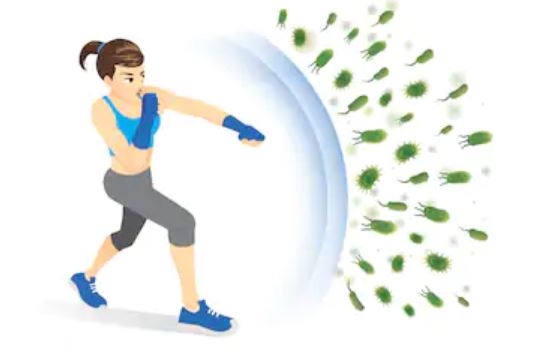
Bats have a strong immune system (picture from the Internet)
5. Bats have superb flying skills and inspire the development of aircraft.
Bats are the only mammals with true flight capabilities and have superb flight capabilities. After conducting in-depth research on the aerodynamic principles of bat flight, scientists found that the flapping of the bat's wings during flight perfectly matches the flexibility and elasticity of the wings. The flight of bats can be called the most bizarre and perfect in the world. Movement, flight of birds and insects are not comparable to bats. Using the flying principles of bats, scientists have developed bat robots, which will be responsible for completing many extreme flight missions (such as in narrow spaces) in the future.
In addition, bats are of great significance to the development of a new generation of aircraft (including drones) because bats have the innate ability to adapt to flying in high-density and complex environments. To ensure the safety of our aircraft, we rely heavily on the cooperation of ground aviation dispatch systems. As far as civil aviation passenger transportation is concerned, we require each flight to take off separately, fly along a pre-planned route, and must land on a specific flight track. Even with such strict layers of supervision, we still hear bad news about plane crashes from time to time. At the other extreme, bats not only do not need a planned route in advance, nor do they need any external information guidance, they perfectly interpret the concept of safe flight. What is even more beyond human reach is that in some extreme environments, hundreds or thousands of bats (or even more) can fly safely in a narrow space at the same time. If one day in the future, the flying skills of bats can be fully explained and applied to modern aircraft, then realizing "intelligent flight" and "safe flight" is really not a dream.
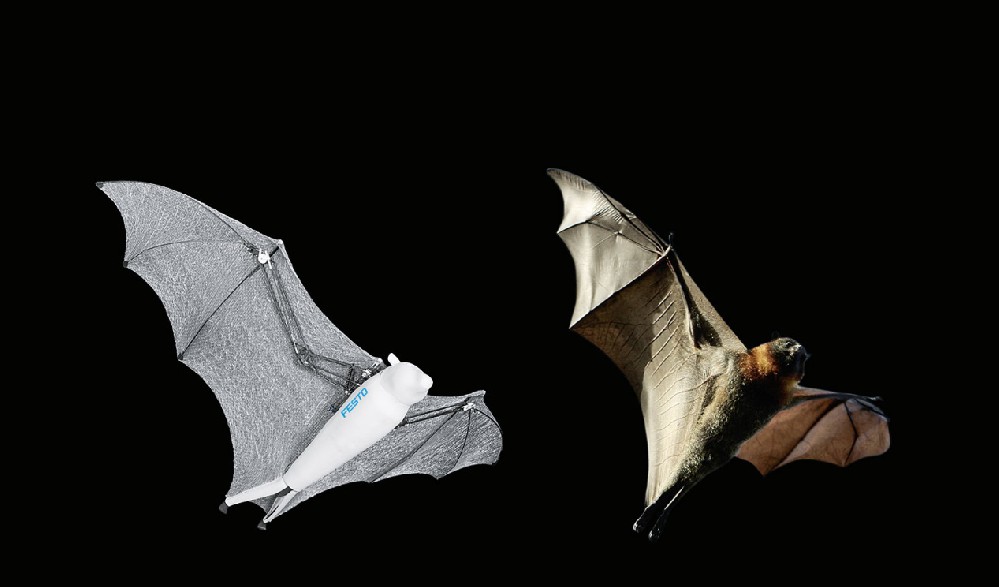
A bat robot developed to imitate the flight of flying foxes (pictures from the Internet)
6. Bats’ unique echolocation capabilities inspired scientists to develop new radar systems
Although the invention of radar preceded the discovery of bat echolocation, later improvements in radar systems were inspired by the echolocation function of bats. For example, bats emit ultrasonic waves when flying to locate obstacles and prey, but background noise overlaps and interferes with the bat's echoes; a similar problem occurs when bats chase moths in dense leaves, bouncing off the leaves. Signals can also cause interference. However, bats get around this problem by recording a "mental fingerprint" of each sound and the corresponding echo in their memory, which allows them to separate the signals by slightly changing the frequency so that one signal doesn't match the other. This ability of bats could help scientists learn new ways to develop radar and sonar equipment to avoid interference from electronic machinery on radar systems.
Perhaps we need to remember that the history of human radar development is less than a hundred years, but echolocation, which has a similar principle to radar, has been improved and used by bats under the pressure of natural selection for about 65 million years. While we are racking our brains trying to improve the detection range and tracking accuracy of our own radar, we are also struggling with how to prevent our equipment from being detected by the other party's radar system. This kind of military equipment competition has continued since the development of radar. Interestingly, this kind of military equipment competition is surprisingly similar to the "predation and anti-predation" equipment competition between bats and prey: as hunters, bats, under the pressure of natural selection, are constantly improving their echolocation systems. Performance; As prey insects, they are also constantly improving their anti-predation skills under the pressure of natural selection. This may also explain why the U.S. military funds bat biology research every year.
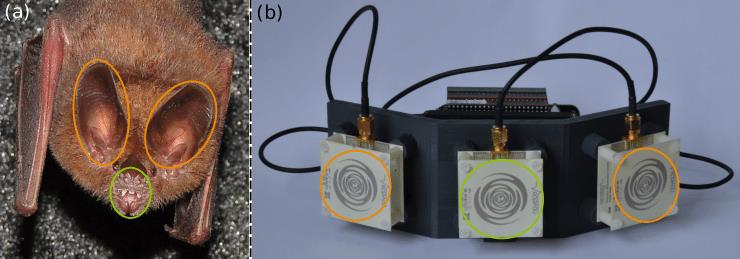
Bats and radar receptors (pictures from the Internet)
7. Bats are mammalian models for deciphering the brain mechanism of human language.
Language is one of the iconic characteristics of human beings and plays an important role in promoting human evolution and the development of social civilization. However, how did language evolve? What are the brain mechanisms underlying language control and learning? These big questions remain unclear. For many years, songbirds have been the main animal model for studying language, but there is a lack of mammalian models that are more closely related to humans. Research in recent years has found that bats are expected to become one of the mammalian models for scientists to study brain mechanisms.
As we all know, human language is learned. This ability is called vocal learning. However, the ability to learn vocalizations is very rare among mammals. Only a few mammals such as bats, Elephants-Are-Endangered.html">elephants, and dolphins have been confirmed to have the ability to vocalize learning. Obviously, due to limitations in body size, species diversity, and number of individuals, bats are a more ideal experimental animal than Elephants-Are-Endangered.html">elephants and dolphins. Bat species are highly diverse, and many bat species are highly gregarious and have complex social structures. High sociality is one of the key factors that promotes the evolution of language. In addition, unlike most mammals, echolocating bats have extremely high vocal activity (the number of vocalizations per second ranges from a few to hundreds), which provides a convenient way to study the brain mechanisms of vocal control. behavioral patterns. Perhaps precisely because of bats’ unique advantages in studying vocal communication and navigation, the study of bat vocal control and learning is one of the main model species for the study of animal vocal communication, and has also become a hope for deciphering the brain mechanism of human language.
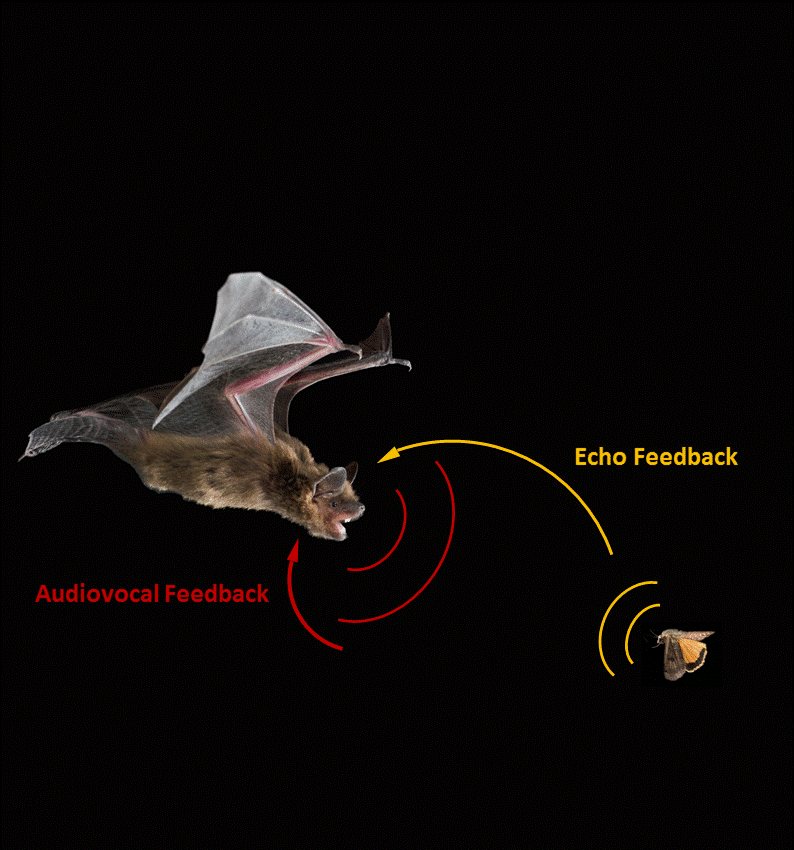
Vocal control and learning in bats (picture from Luo Jinhong)
8. Bats help uncover the secrets of orientation perception and spatial navigation in human and animal brains
When we walk out of the house and go to a nearby park or shopping mall, we can always find our way home easily. In this process that everyone takes for granted, our brains provide a large amount of extremely precise navigation information. For example, how far does it need to go from the entrance of the shopping mall to the next intersection, and then turn left or right, etc. So, how does our brain know this position, distance and direction information? In response to these problems, scientists such as Professor O’Keefe from the UK and his postdoctoral students Mr. and Mrs. Moser have done a series of outstanding works. They found that "place cells" that process position information, "grid cells" that process distance information, and "head orientation" that process direction information were found in the hippocampus of the rat brain and its adjacent brain area, the entorhinal cortex. Cells" and other navigation cells form the "GPS" in the brain. Professor O’Keefe and the Mosers also shared the 2014 Nobel Prize in Physiology or Medicine. However, these findings were all obtained in two-dimensional (2D) space. What is the situation in a more realistic 3D environment? At this time, conventional animal models such as mice or rats can no longer be used as experimental subjects. Scientists thought of bats, the only mammals that can fly that live in 3D space, and used bats as experimental subjects and did a lot of outstanding work. The study found that in 3D space, place cells in the bat hippocampus process vertical and horizontal information in an isotropic manner; cells in the anterior hippocampus can respond to the three Euler angles of the head direction (horizontal azimuth angle, pitch angle and roll angle) are continuously represented to achieve accurate acquisition of directional information in 3D space.
When moving from one environment to another, the "GPS" in our brains needs to be reset to adapt to the navigation needs of the new environment. So, a very important scientific question is, how often can the "GPS" in our brain be reset? Previous research has shown that this time scale is about 1 minute. However, taking advantage of the high time accuracy of bat echolocation, researchers found that the "GPS" reset time is about 300 milliseconds, which greatly refreshed people's understanding. Some species of bats have both visual and echolocation abilities. The researchers took advantage of this feature to compare the ability of place cells to process position information under visual cues and auditory cues. The results showed that place cells had higher spatial resolution under visual cues. In addition, the study also found that there are "social place cells" in the hippocampus of bats that recognize the locations of other bats. Although the mechanisms of brain navigation have gradually become clearer, there are still a large number of questions about spatial navigation that remain to be answered. For example, how do the brain areas where the above-mentioned navigation cells are located cooperate with each other to complete navigation tasks? Current research is all in a laboratory environment with extremely limited space. So what is the difference between navigation in a real natural environment and a large spatial scale? etc. It is not difficult to imagine that by taking advantage of the many species-specific fascinating characteristics of bats, the secrets of the brain's navigation in 3D space will continue to be cracked!
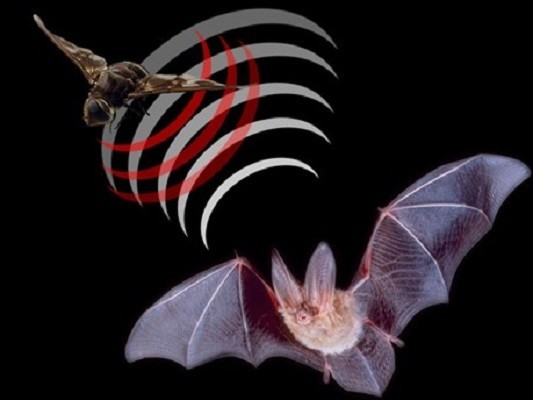
Three-dimensional space navigation of bats (pictures from the Internet)
8. Bats are an indispensable group of animals to maintain the health of ecosystems.
For a long time, bats have played a pivotal role in pest control, seed dispersal, plant pollination, and forest succession. Although different bat species exhibit diverse feeding habits such as insectivory, frugivory, nectarivory, piscivory, carnivory, and even haemophagy, more than two-thirds of bats feed exclusively or facultatively on insects. In the ecosystem, bats are the main controllers of nocturnal insects and can capture large numbers of insects every night. It is estimated that captive bats consume about a quarter of their body weight in insects every day; but in wild conditions and during periods of high energy consumption such as lactation, this number can be as high as 70%, and sometimes even exceeds 100%.
Bats often appear in farmland, where they usually wait for opportunities to prey on many potential agricultural pests. Research shows that the Brazilian dog-nosed bat (Tadarida brasiliensis) opportunistically preys on a variety of agricultural-related pests. Furthermore, because of the migratory behavior of many major agricultural pests, the value bats impart to agriculture may extend to other agricultural areas hundreds of kilometers away, rather than being limited to the bats' local foraging areas. Studies have shown that bats are excellent predators in agricultural fields. A study by Cleveland et al. evaluated the economic value of pest suppression services provided by Brazilian dog-nosed bats to cotton production in south-central Texas and showed that bats avoid cotton damage and pesticide use each year by preying on pests. The value is US$740,000, accounting for 15% of the final value of cotton production. In North America alone, bats are worth an estimated $22.9 billion per year by reducing crop damage and avoiding the use of pesticides. In Thailand, bats can prevent the loss of nearly 2,900 tons of rice every year by preying on pests in rice fields, generating an economic value of more than 1.2 million US dollars, which means that bats in Thailand can provide food for nearly 30,000 people every year. In addition, through large-scale seine experiments in corn fields, researchers found that bats exerted sufficient pressure on crop pests and were able to reduce pest-related fungal growth and fungi in corn while suppressing the larval density and damage of corn pests. Toxins, conservatively estimated to be worth more than $1 billion globally in corn cultivation alone through their suppression of pests, and bats can indirectly inhibit the growth of pest-related fungi and toxic compounds on corn further benefit mankind. In many cases, the larvae of many agricultural pests can cause damage to crops, and bats can prey on the adults of the pests, thereby preventing the adults from laying eggs and thus reducing the development of the larvae. Therefore, bat predation on pests may have cascading effects on agricultural ecosystems.
The traditional method of studying bat feeding habits is to conduct morphological analysis of food residues in bat feces; this method has major limitations, which hinders the study of bat feeding habits. With the development of modern molecular biology technologies, such as DNA metabarcoding and environmental DNA (e-DNA) analysis, we have a new understanding of the ecological services of bats in preying on pests. Aizpurua et al. (2018) used e-DNA analysis to study the feeding habits of the common long-winged bat (Miniopterus schreibersii) across Europe and found that the common long-winged bat can prey on more than 200 species of arthropods, including 44 species of agricultural pests. , these pests can harm many crops in continental Europe, and the common long-winged bat can adjust its feeding habits according to the food resources available in local farmlands and reshape its feeding niche. It can be seen that the inhibitory effect of bats on agricultural pests has been seriously underestimated for a long time.
In addition, bats can also provide key ecosystem services by pollinating and dispersing seeds of various plants. Research on the pollination ecology of durian shows that although the giant bee (Apis dorsata) is the most frequent flower visitor of durian, fruit bats, especially the long-tongued fruit bat (Eonycteris spelaea), are the main pollinator of durian, with an average of 26 times per night. Frequency of flower visits. In tropical areas, due to their large size and high mobility, flying foxes have become efficient pollinators and seed dispersers. Many flying foxes fly more than 60 kilometers from their habitat to their feeding grounds every night. Bats shape the diversity and physical structure of forest communities, allowing the survival of many plant and animal species in the forest. In nature, a variety of plants depend on bats for reproduction to varying degrees, including a variety of commercial crops such as bananas, mangoes, and guavas. On islands, evolutionary chance and the human-induced extinction of other local seed dispersers means that flying foxes are the only agents of pollination or seed dispersal. Therefore, flying foxes are a keystone species endemic to the local area or island that maintains plant viability. The extinction of flying foxes on islands could trigger cascading extinctions, leading to irreversible ecological and economic consequences.

Ecosystem service functions of bats: pollination, pest control and seed dispersal (pictures from the Internet)
10. The number of bats has declined seriously and they are in urgent need of protection.
There are more than 1,400 species of bats in the world, with extremely high species diversity. They are one of the most widely distributed, numerous, and most evolved mammal groups in the world. Except for some islands in the polar regions and oceans, they utilize various terrestrial ecological environments on the earth's vast territory and provide a series of important ecosystem services. However, existing bats face multiple threats and their survival situation is not optimistic. In recent years, an increasing number of human activities have led to unprecedented declines or extinction of bat populations, such as the depletion or destruction of forests and other terrestrial ecosystems, human interference with caves, loss of bat habitats, hunting, and white-nose synthesis. disease (White Nose Syndrome), pesticide abuse, and the increasing number of wind energy installations. According to our field survey data in the past 20 years, the current population of bats in China has dropped by more than 50% compared with 2000. Among them, cave tourism development, pesticide abuse, and indiscriminate hunting are the three main reasons. The death of large numbers of bats not only poses a threat to biodiversity, but also causes serious economic consequences. Research shows that in North America alone, the death of North American bats from factors such as white-nose syndrome and wind power could result in agricultural losses estimated at more than $3.7 billion per year. Because bats have the characteristics of long generation and low reproduction rate, once the population is damaged, its recovery rate is extremely slow. However, in our country, not only due to the spread of some diseases, the public misunderstands bats, but also because of the lack of research on the functions of bats in the ecosystem, which has not attracted the attention of the government and the public. The current situation of bat species diversity protection in China is particularly worrying; So far, no bat species has been included in the "List of Key Nationally Protected Wild Animals in China". Protecting bat populations and habitats from destruction is not only an important way to maintain biodiversity and ecosystem functions, but also an important guarantee for ecosystem integrity, national economy, and human well-being.
In fact, the main reason why bats spread zoonotic diseases is due to human interference. Human deforestation has reduced the bats' natural habitats, forcing them out of their original ecological niches. These bats lose their usual foraging and behavioral patterns and invade near human habitations, where they directly or indirectly transmit the virus to humans or livestock. If bats feed in places where humans live, it will virtually increase the chance of cross-species transmission of viruses in bats. If local people eat bats as game, then disease will be the bat's best way to fight back. We appeal that as long as humans do not interfere with bats, do not destroy bat homes, and do not eat bats and bat food, the viruses carried by bats may not infect humans. Instead, bats will be a boon to ecosystem health, human health, and longevity. As recorded in "Shangshu", bats can bring "five blessings": the first is longevity, the second is wealth, the third is health, the fourth is good virtue, and the fifth is good death.

The number of bats has declined seriously and is in urgent need of protection (picture from the Internet)
author:
Wuhan University Professor Zhao Huabin
Central China Normal University Professor Luo Jinhong
Central China Normal University Fu Ziying Associate Professor
Researcher Liu Zhen, Kunming Institute of Zoology, Chinese Academy of Sciences
Northeast Normal University Jiang Tinglei Associate Professor
East China Normal University Mao Xiuguang Associate Researcher
Researcher Zhou Peng, Wuhan Institute of Virology, Chinese Academy of Sciences
Researcher Zhang Libiao, Guangdong Institute of Biological Resources Application
animal tags: bats SARS longevity immunity flight radar perception
We created this article in conjunction with AI technology, then made sure it was fact-checked and edited by a Animals Top editor.